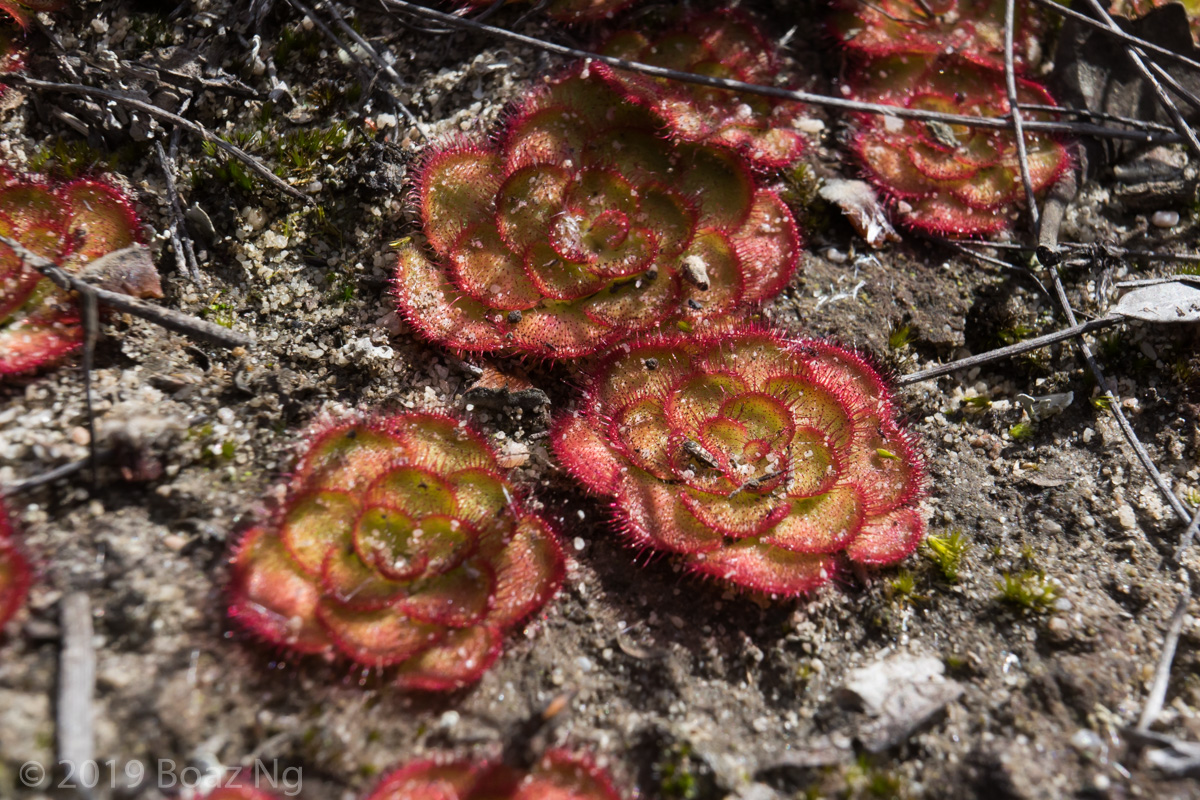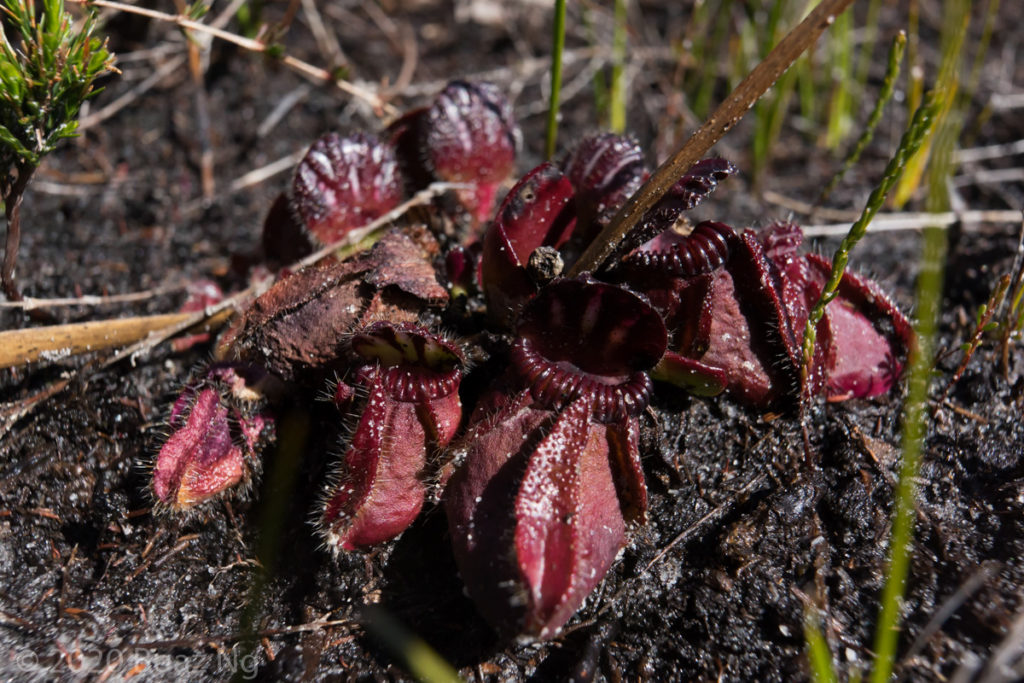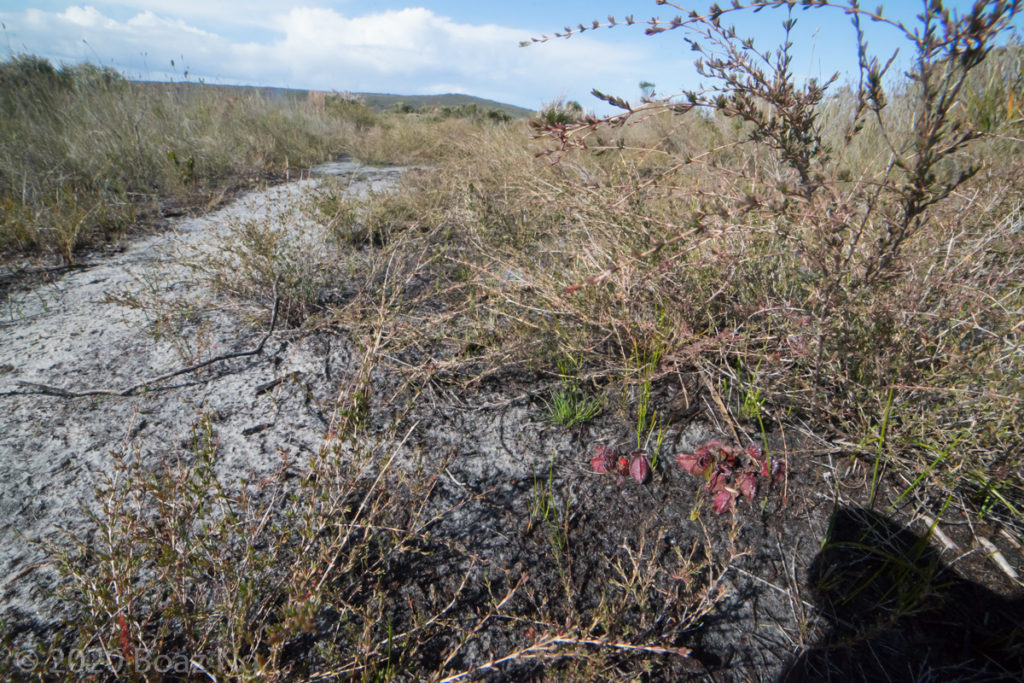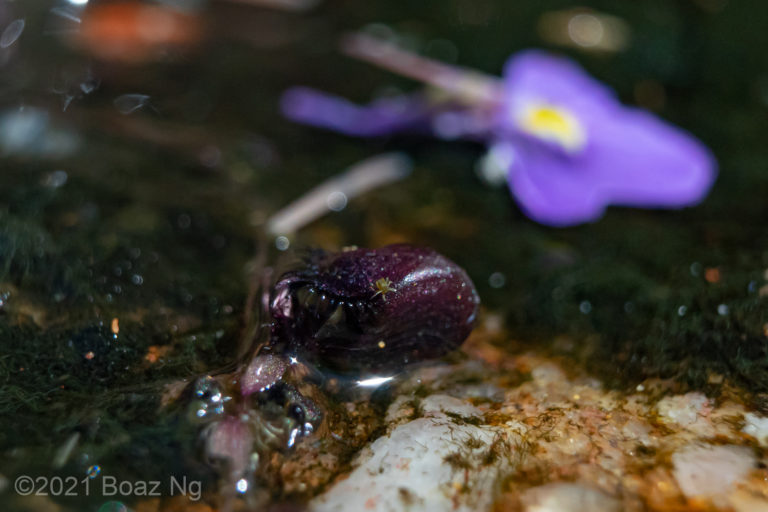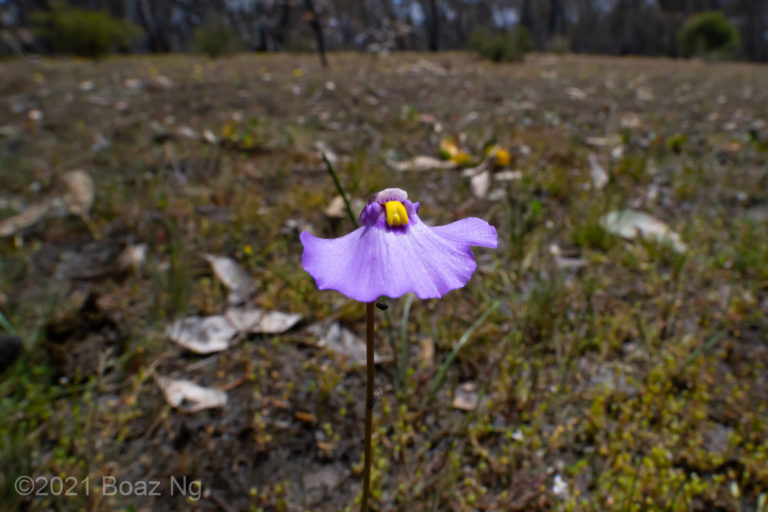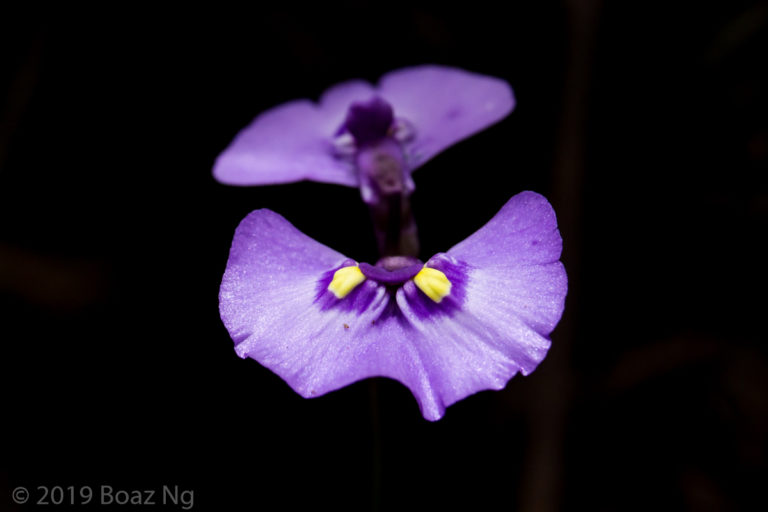At the end of winter in 2019 I embarked on an expedition to document the carnivorous plants of Western Australia. Over 17 days, I drove almost 3,500 km and photographed over 50 species in their habitat.
Previous: Part 4. Mountain Ranges
It was now exactly one week into my journey and with Peter gone, I was by myself for the rest of the trip. I planned to spend the next day looking for some species native to the Albany region before continuing my exploration several hundred kilometres east. In particular, I wanted to find more Cephalotus and the rare fan-leaved sundew D. fimbriata.
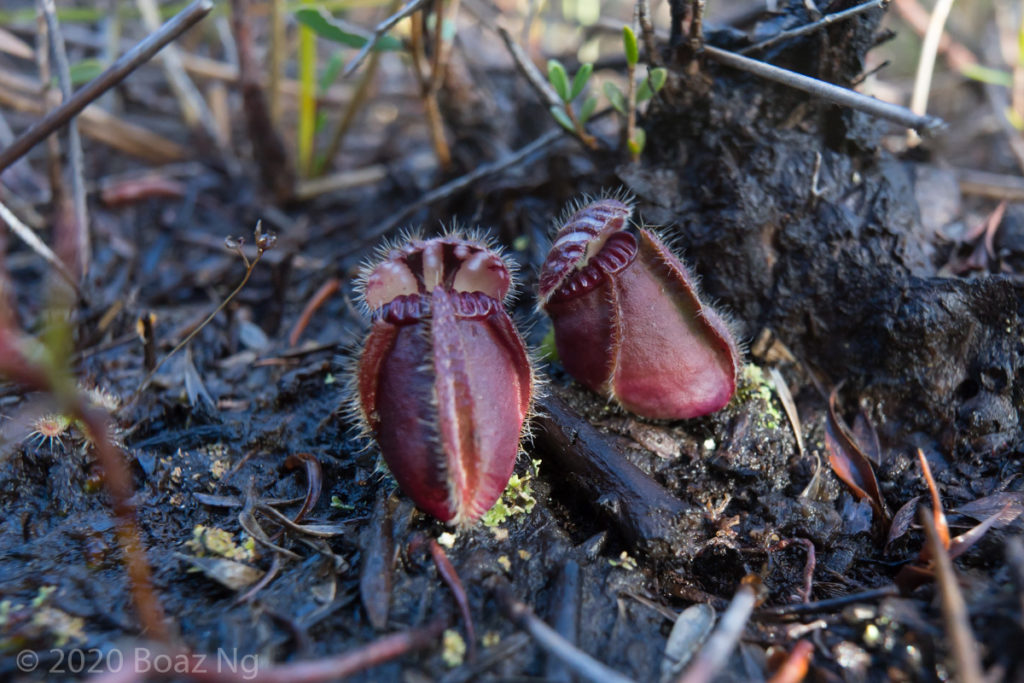
Although I had already seen Cephalotus earlier in my trip, the sea cliff where I had sighted it was not the typical habitat for the species. In order to understand its niche, I wished to find it growing in various habitats. Without any set coordinates, I simply drove around to various scenic locations, keeping an eye out for locations along the way. In a roadside ditch near Two Peoples Bay, I was able to locate a single specimen of the species in the thick growth draining into a swamp. There were likely more plants hidden in the area but I was quickly ushered out by a water infrastructure worker who informed me that I was actually trespassing in a restricted area, having missed the sign further up the road.
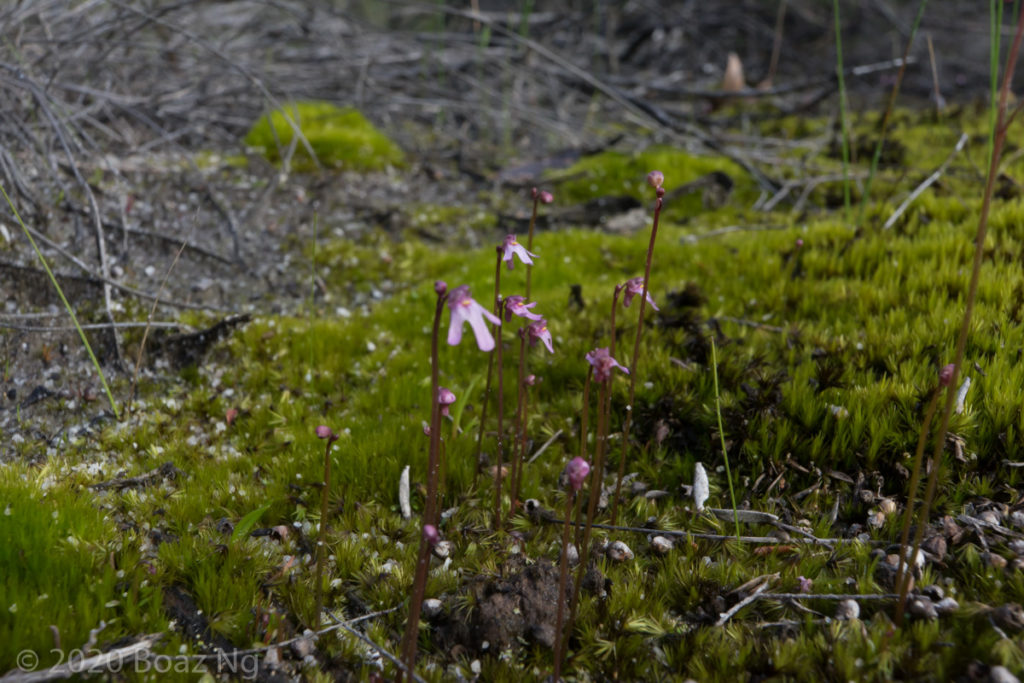
Somewhat satisfied that I had already located the pitcher plant before noon, I turned my attention to finding D. fimbriata, an elusive member of the Stolonifera complex which has interesting whorls of non-carnivorous leaves. As a rare species, the publicly available datasets for the plant are generalised, so I tried searching in a range of sandy habitats where I believed it would grow. My first stop was a small reserve off the highway, where I saw an assortment of species such as D. erythrorhiza, D. pallida and D. drummondii I also found a small patch of U. tenella growing in a ditch, but alas, no D. fimbriata was seen. I then decided to head over to the Manypeaks Nature Reserve – after all its common name is the ‘Manypeaks sundew’.
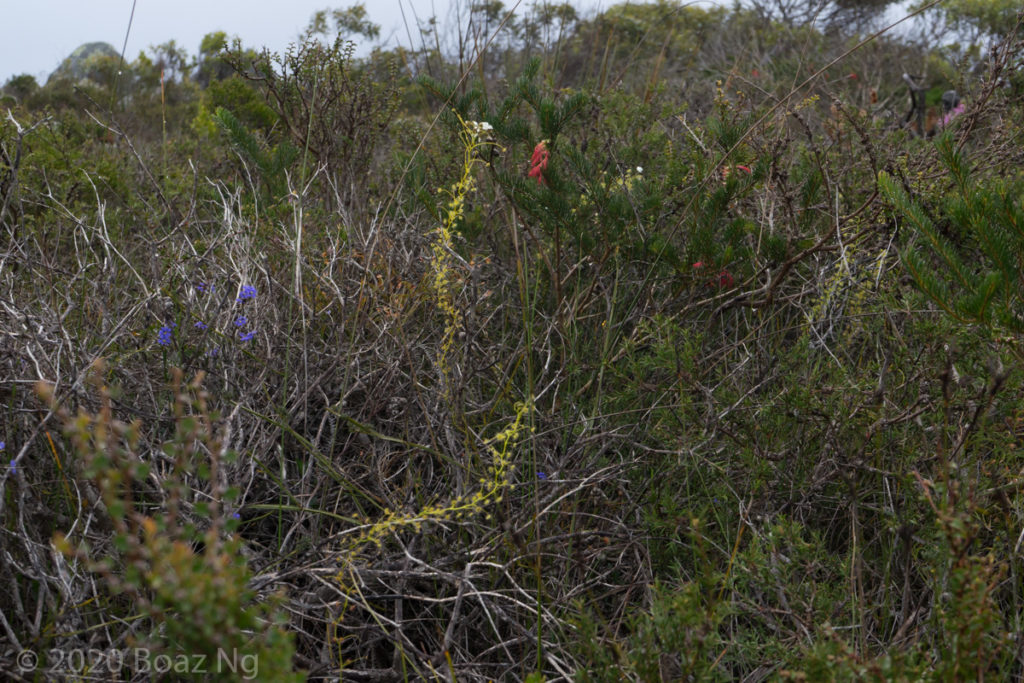
Drosera erythrogyne 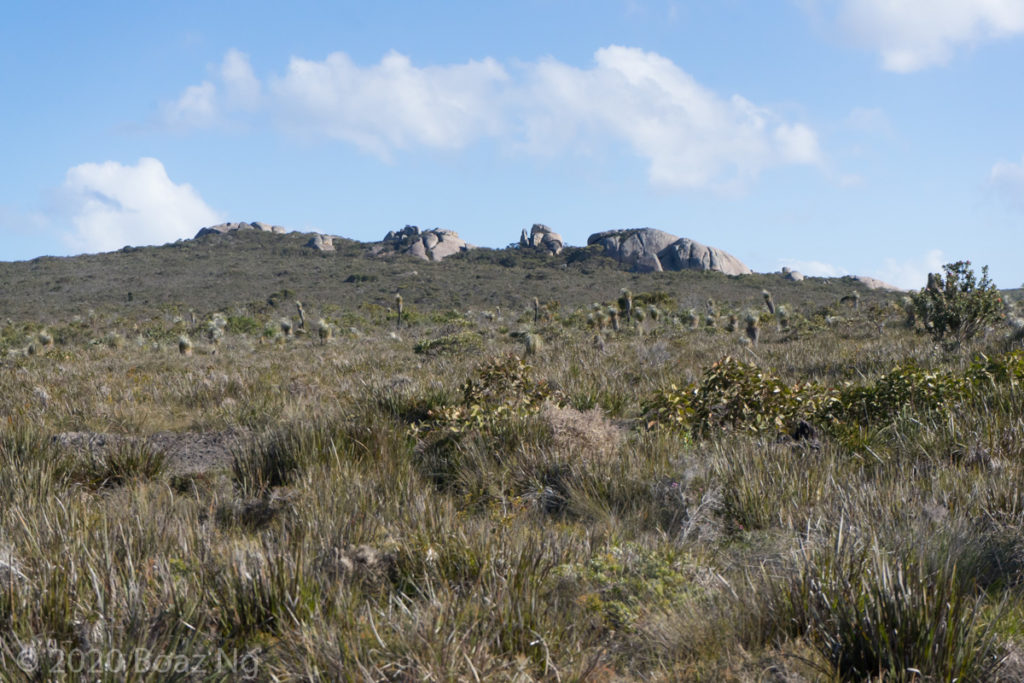
Landscape of the Manypeaks area 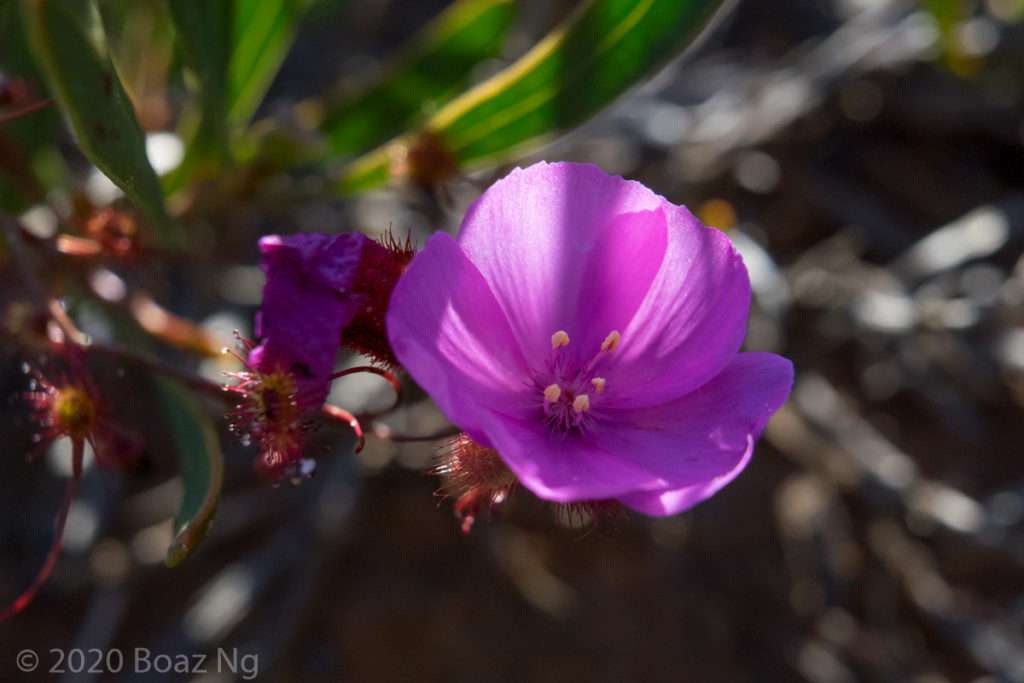
Drosera drummondii
As I arrived at the coastal national park, I was allured by the many weathered granite hills that emerged out of the landscape. I randomly chose a walk and quickly discovered that this was not going to be an easy feat, as the trail mostly consisted of loose sand. It ended up taking me more than an hour to finally reach the top of one of the granite hills where of course it started raining on me. At this point I was quite mentally deflated as there weren’t many sundews after all the effort. I took a few quick snaps of some D. erythrogyne and headed back down the hill.
On my way back to the carpark, I resolved to at least find something interesting before I left the area, so I headed off-trail into the coastal heath. Eventually I intersected an old road, which was cut deep enough into the ground to produce a seepage. To my surprise I spotted Cephalotus growing amongst the shrubs I would never have thought that the species grew in such a habitat and it seems that it was a lot less picky than I predicted, needing only a perennial source of water. This discovery cheered me up considerably after a somewhat disappointing few hours of walking.
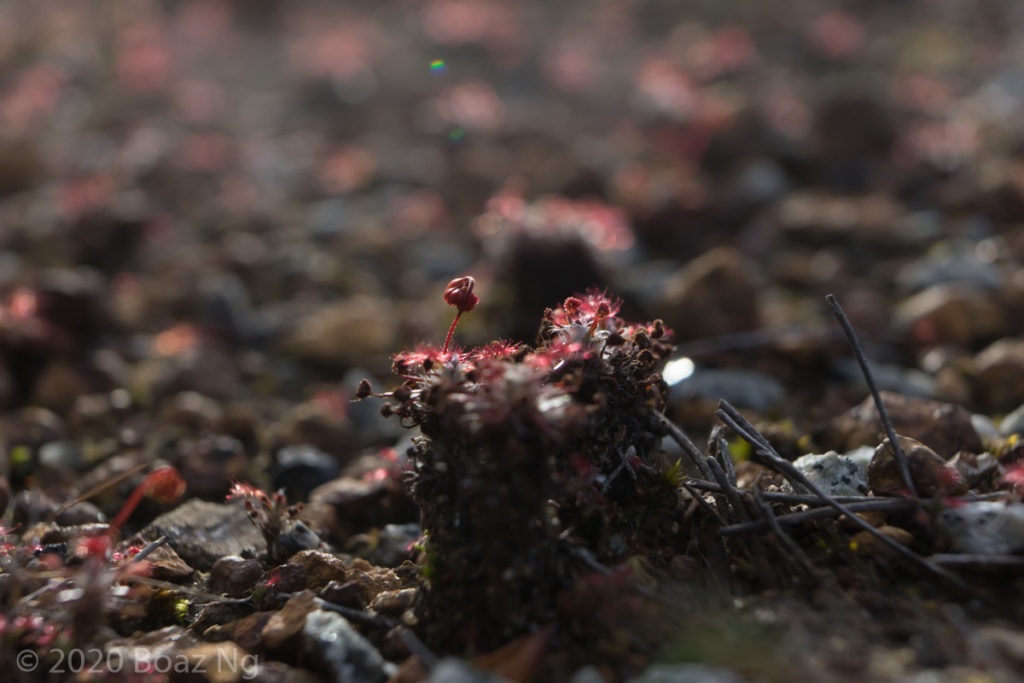
Drosera verrucata on the side of the road 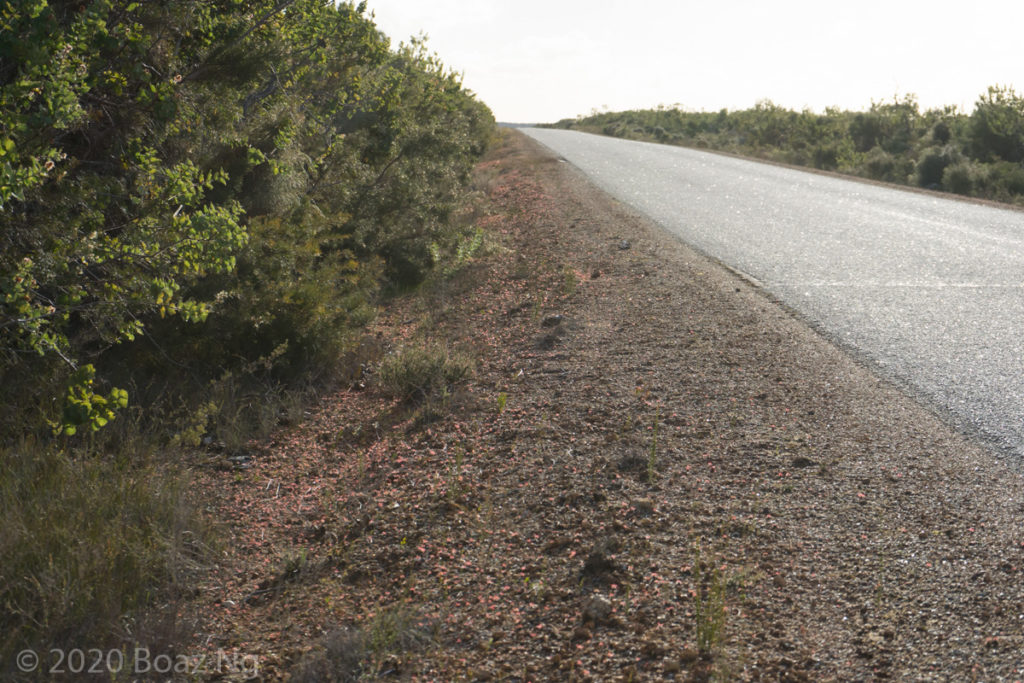
Drosera verrucata on the side of the road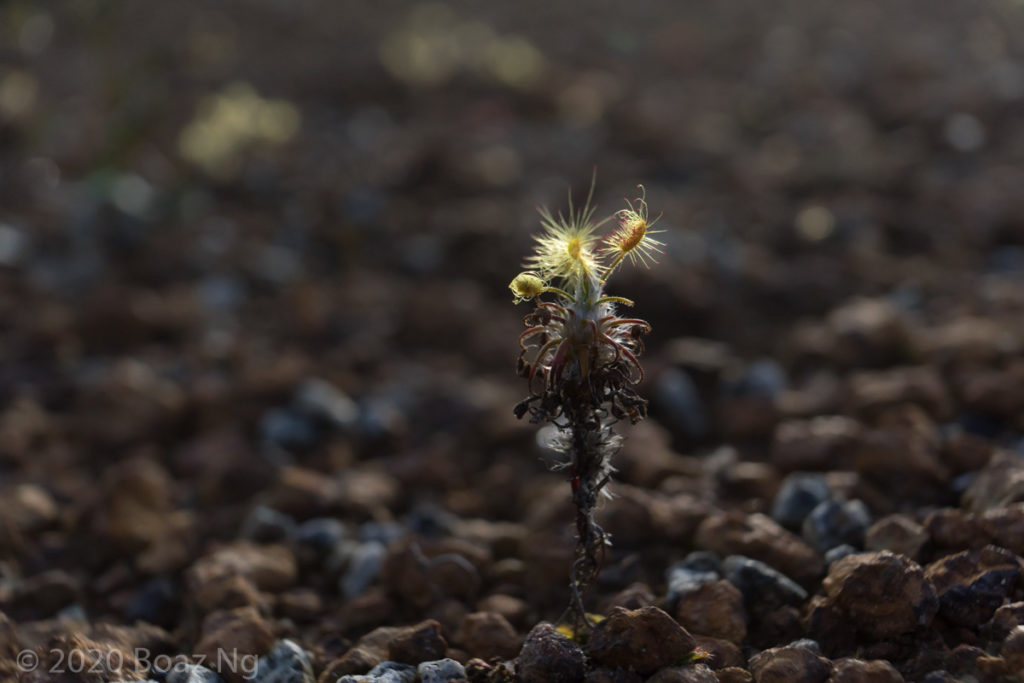
A golden form of Drosera scorpioides
It was late afternoon by the time I got back to the carpark. As I drove back to Albany, my eyes were evidently still attuned to spotting sundews because I noticed that the side of the road had a curious sheen to it. Stopping the car, I found hundreds of D. scorpioides and D. verrucata glowing against the low sun. In contrast to the reddish plants in the Stirling Range, this population of D. scorpioides was golden in colour and it was interesting to see this geographic variation.
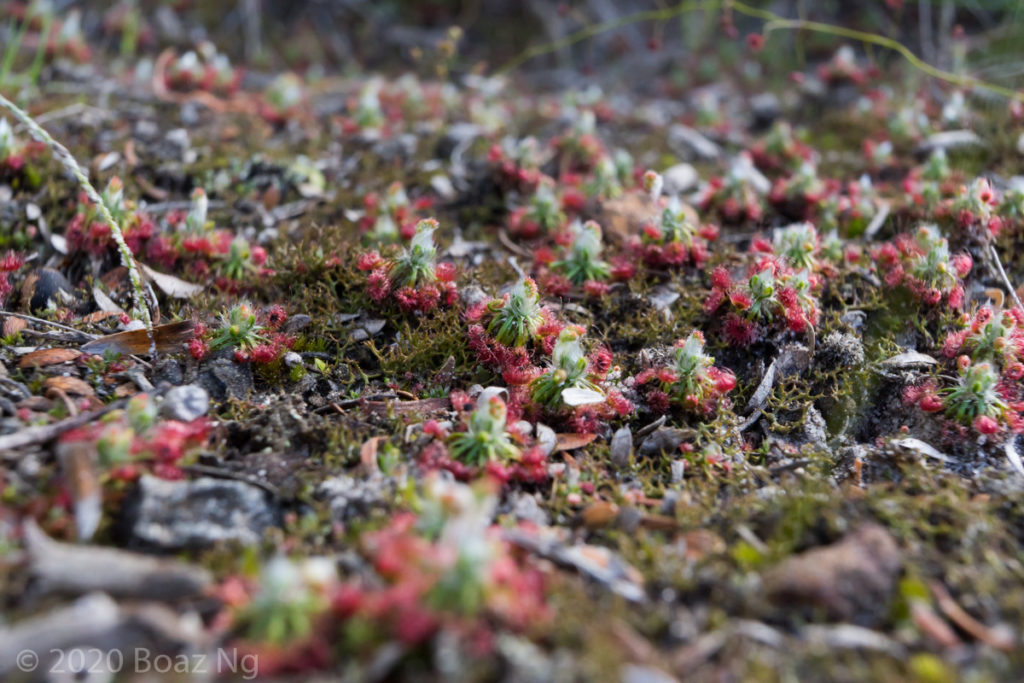
Having not found D. fimbriata the previous day, I gave it another shot the following morning as I left Albany and searched along a very long strip of nature reserve adjacent to the highway. Whilst I was ultimately unable to locate the species, I did sight plenty of D. platypoda, D. erythrorhiza and pygmy sundews, which were lovely in their own right. Deciding to cut my losses before midday, I continued my journey east on the 300 km drive to the Fitzgerald River National Park. Failing to find D. fimbriata dampened my mood quite a bit, but at least it gave me a reason to return to the beautiful region sometime in the future.
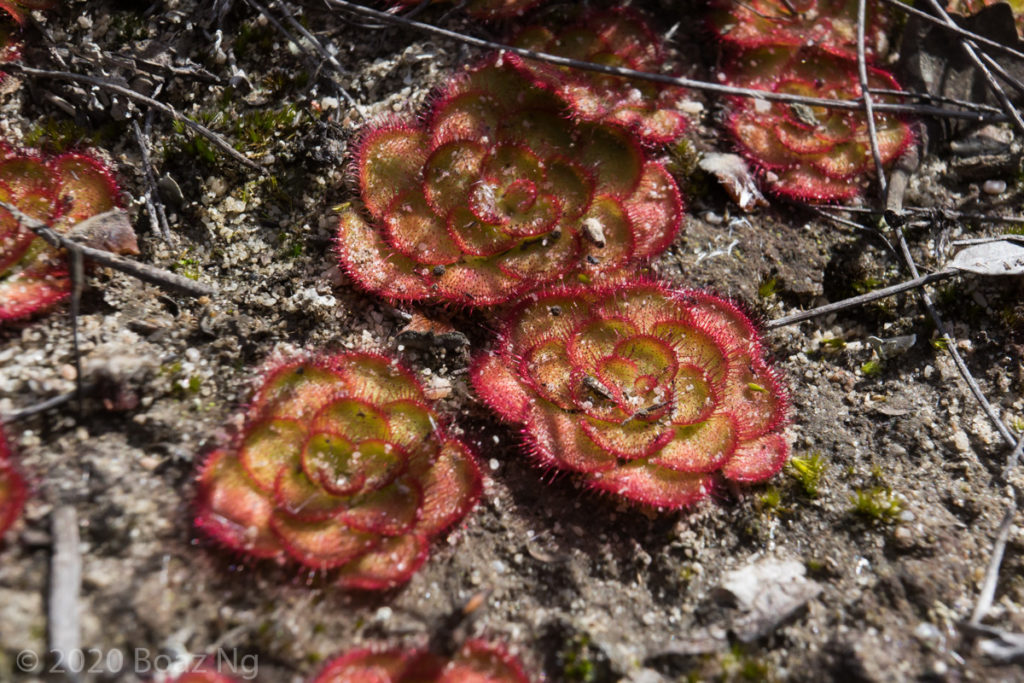
Drosera zonaria
As the highway veered away from the coast, I noticed that the bushland changed from coastal heath to semi-arid mallee vegetation. This ecosystem is named after the dominant small, multi-stemmed Eucalyptus growth and is characterised by its sparse plant cover, flat topography, and exposed soils. I took the opportunity at a rest stop to investigate the change in habitat and literally jumped for joy when I found the tessellating rosettes of D. zonaria all around me! This species is one of the most stunning tuberous rosetted sundews and was near the top of list of plants to find. Rejuvenated in spirit, I continued along the highway and it wasn’t long before I found myself entering the boundaries of the Fitzgerald River National Park.
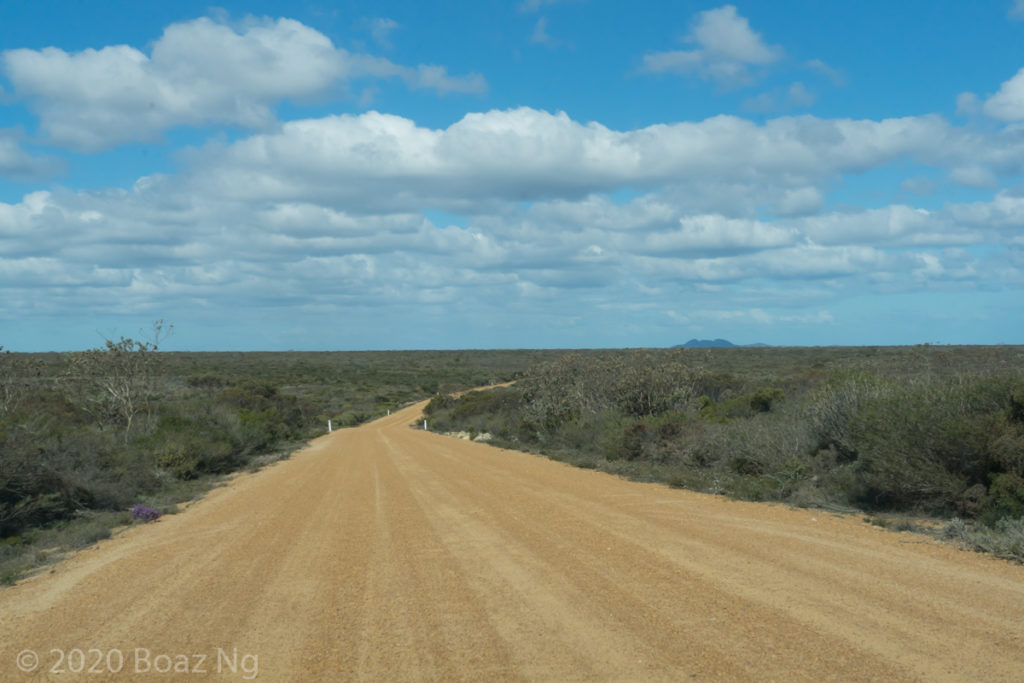
Before me lay a vast expanse of virgin bushland extending as far as the eye could see. The grandeur of the open space was simply awe inspiring and gave me a glimpse of what the region was like prior to European contact. I was fortunate in that the forecast rains did not eventuate, which meant that the unsealed portion of Hamersley Drive was open to 2wd vehicles. The road traverses the untouched interior of the national park, giving me access to a range of ecosystems along the way.
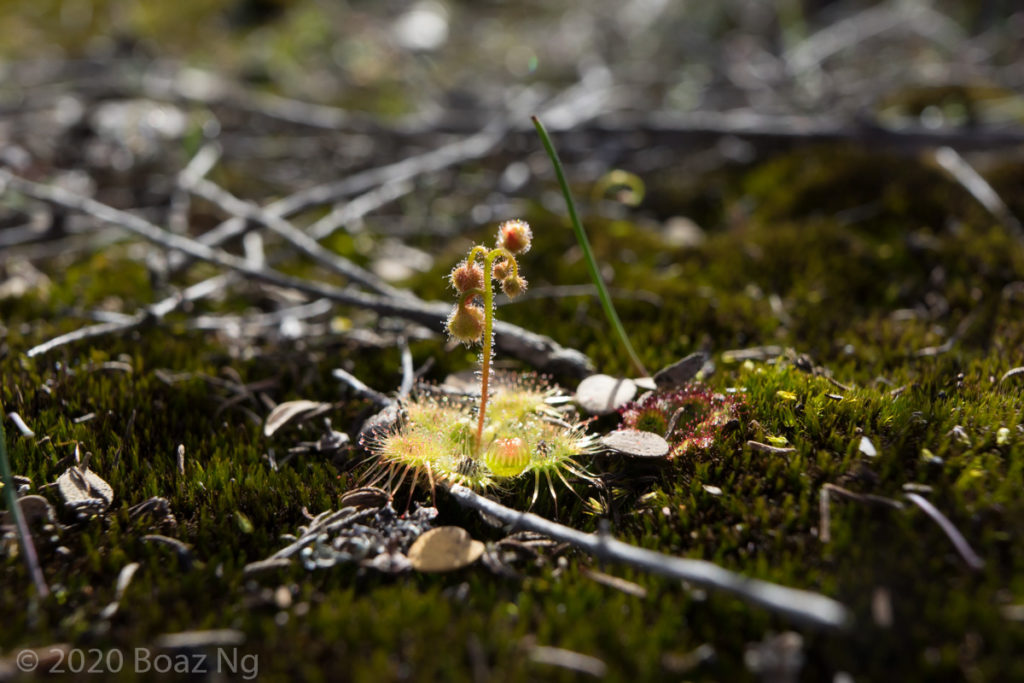
Drosera glanduligera 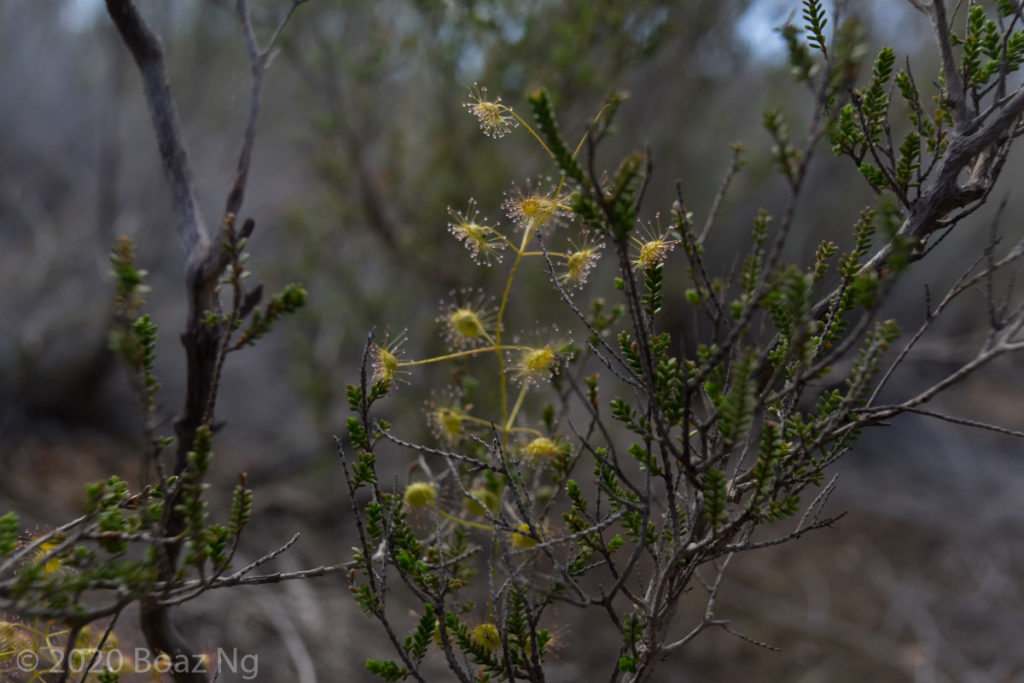
Drosera macrantha 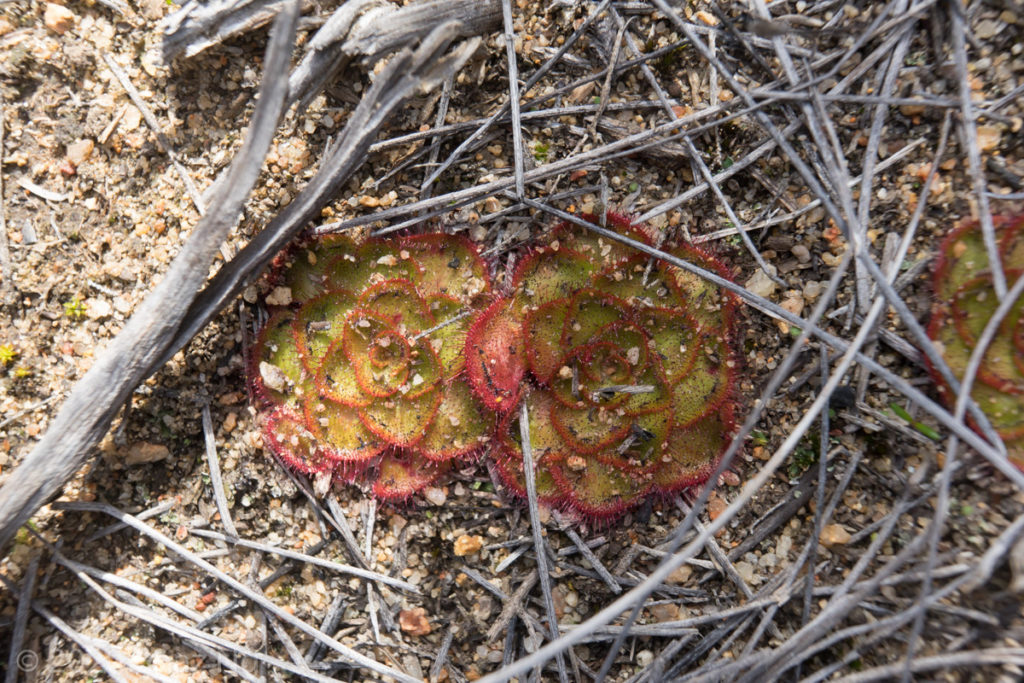
Drosera zonaria 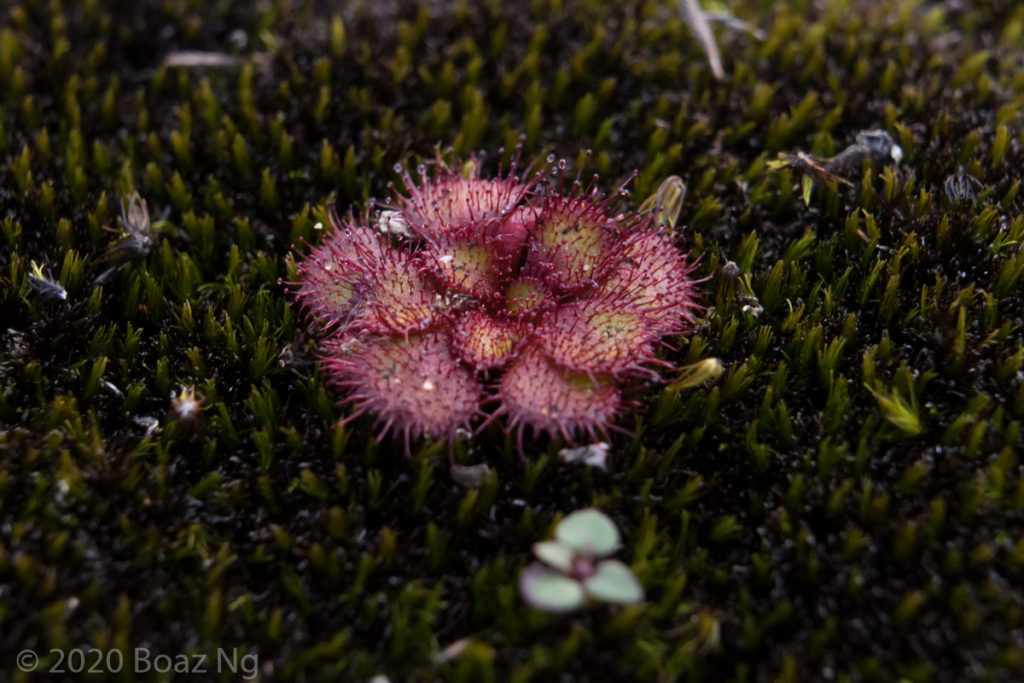
Drosera lowriei
As it turns out, most of the road passed through dry mallee heath, which was not particularly productive in terms of carnivorous plants. I was also too preoccupied with not ruining the rental car on the heavily corrugated road that I didn’t make too many stops. At some point, I passed a small river and decided that it was notable enough to get out and investigate. The geographical depression caused by the watercourse created a wetter niche suitable for D. glanduligera, D. macrantha and D. zonaria to grow but my excitement intensified when I spotted an unfamiliar plant – tiny rosettes of D. lowriei, a species with overlapping rounded leaves occupied mossy seepages adjacent to the creek bed.
By now I was rather exhausted after some 350 km of driving so I hurried on towards the campsite to pitch my tent before sunset. Always wanting to make the most of my day, I drove a short way back up the hill to watch the setting sun illuminate the dramatic profile of the coastal granite mountains. There I found D. zonaria and D. scorpioides all around me, but I was most impressed with the striking leaves of the (non-carnivorous) Hakea victoria, with its intricately patterned and formidably shaped foliage.
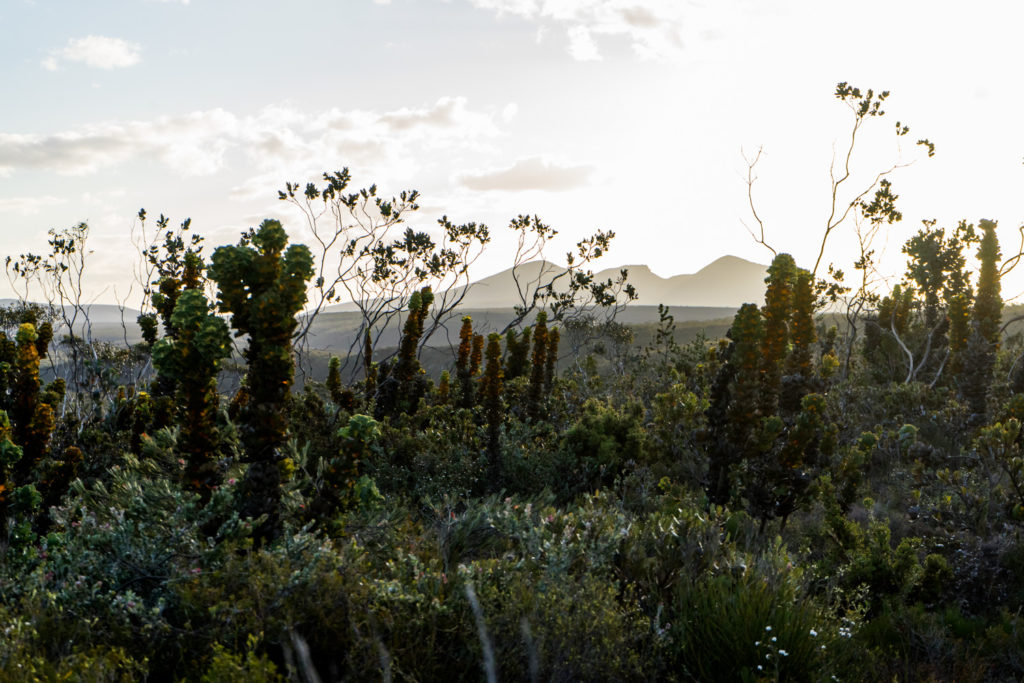
The dramatic landscapes of the Fitzgerald River National Park 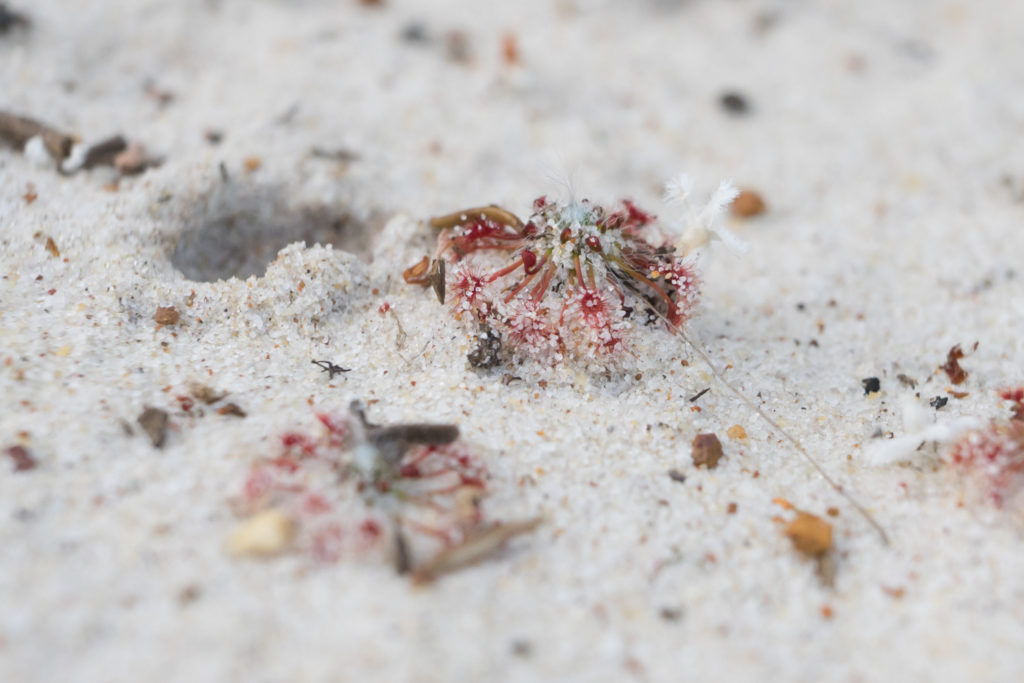
An unidentified pygmy sundew 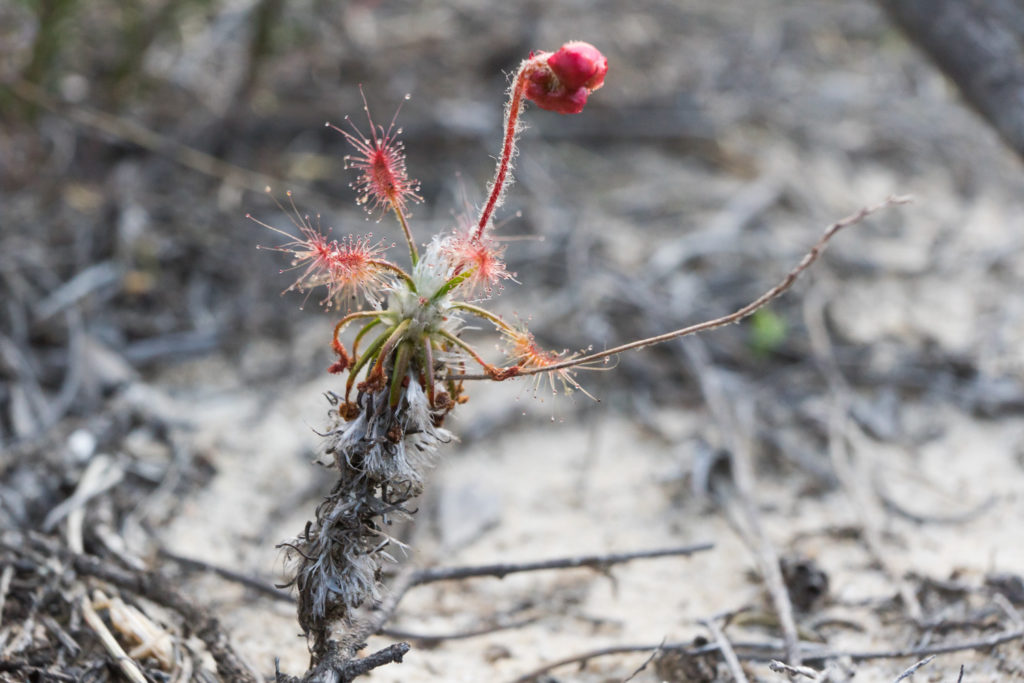
Drosera scorpioides 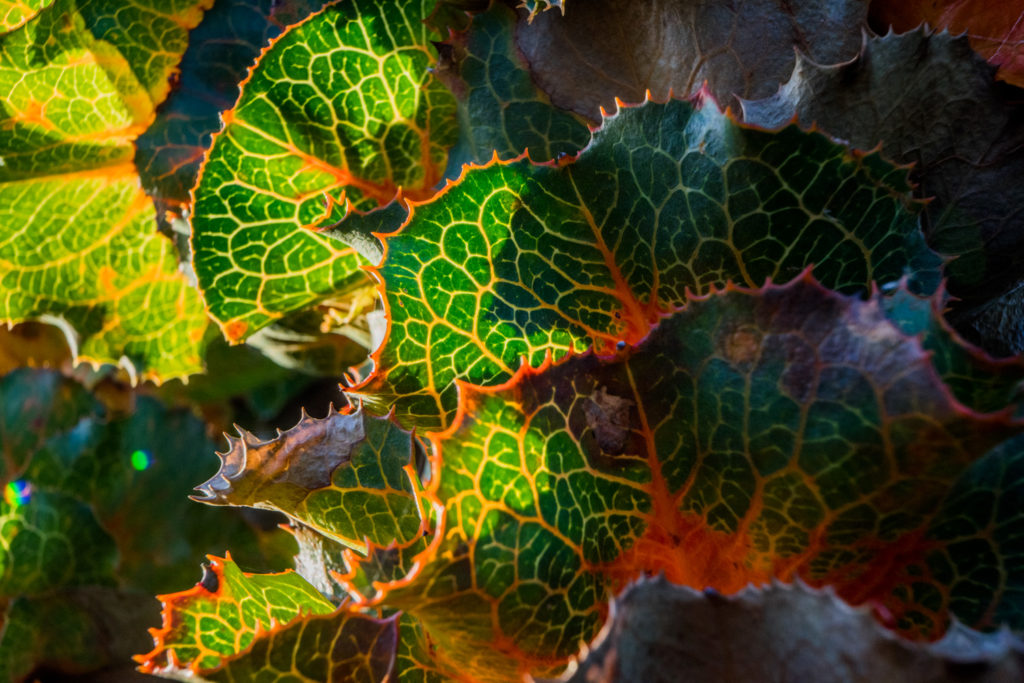
Hakea victoria
After a freezing night of sleep, I awoke refreshed and ready to start the next half of my expedition with a long drive 250 km north into the agricultural Wheatbelt region. I was quite frankly rather tired of the coastal environment so didn’t waste too much time getting out of the national park and hightailing it on the highway towards Ravensthorpe and beyond. Soon, I was back in mallee habitat and at my first stop, I noticed that the ground was covered in D. zonaria. The species has a propensity to propagate itself clonally and over many years, adjacent clusters had merged into one massive colony.
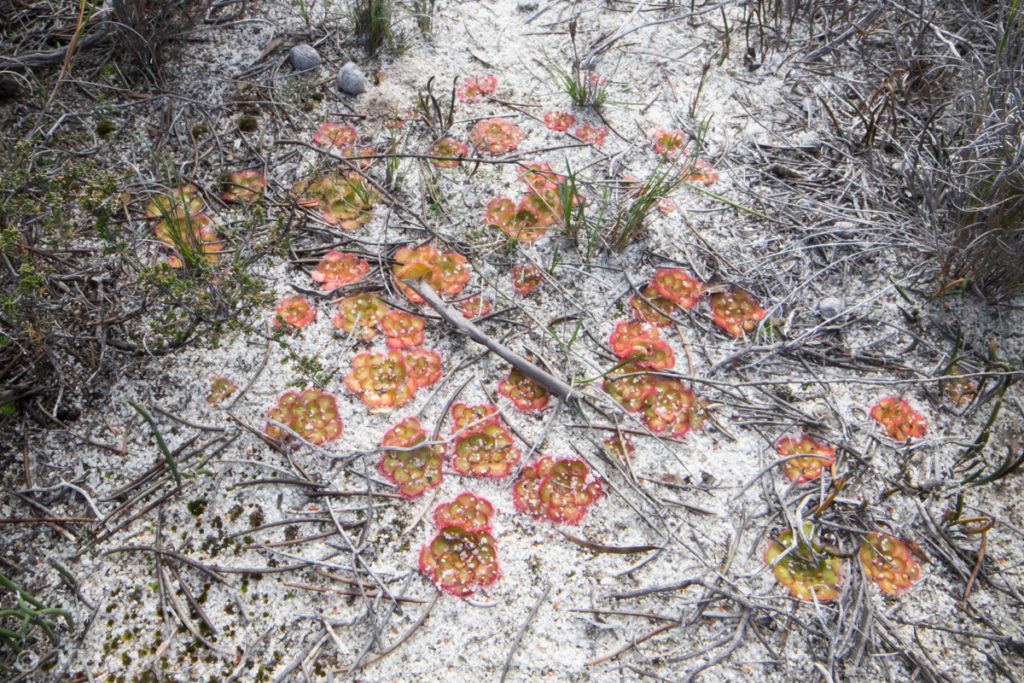
Drosera zonaria in mallee shrubland 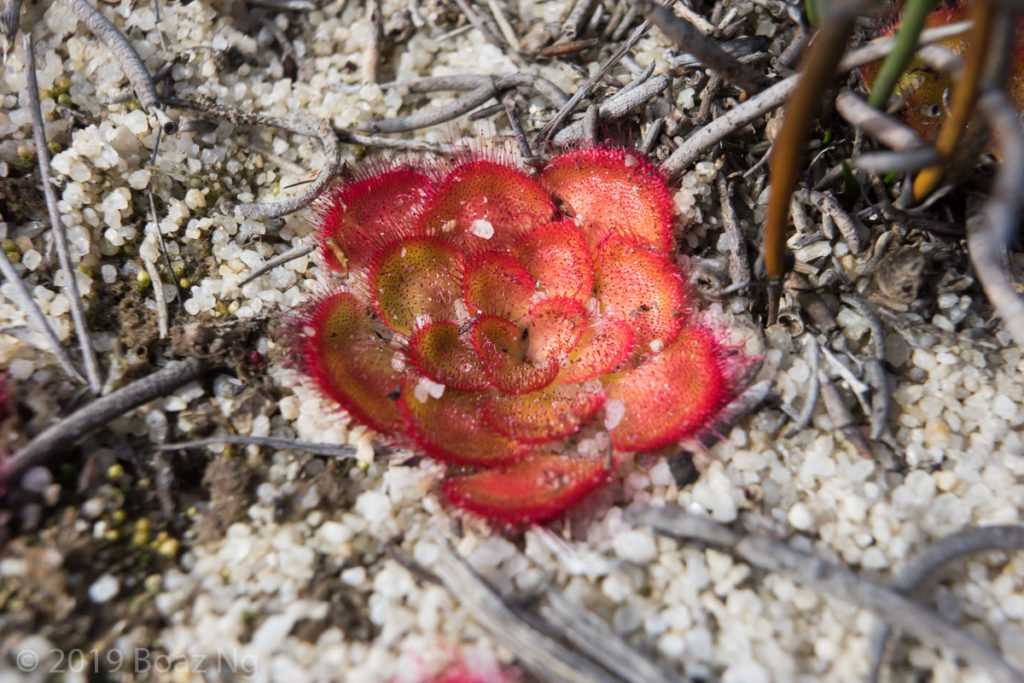
Drosera zonaria in mallee shrubland 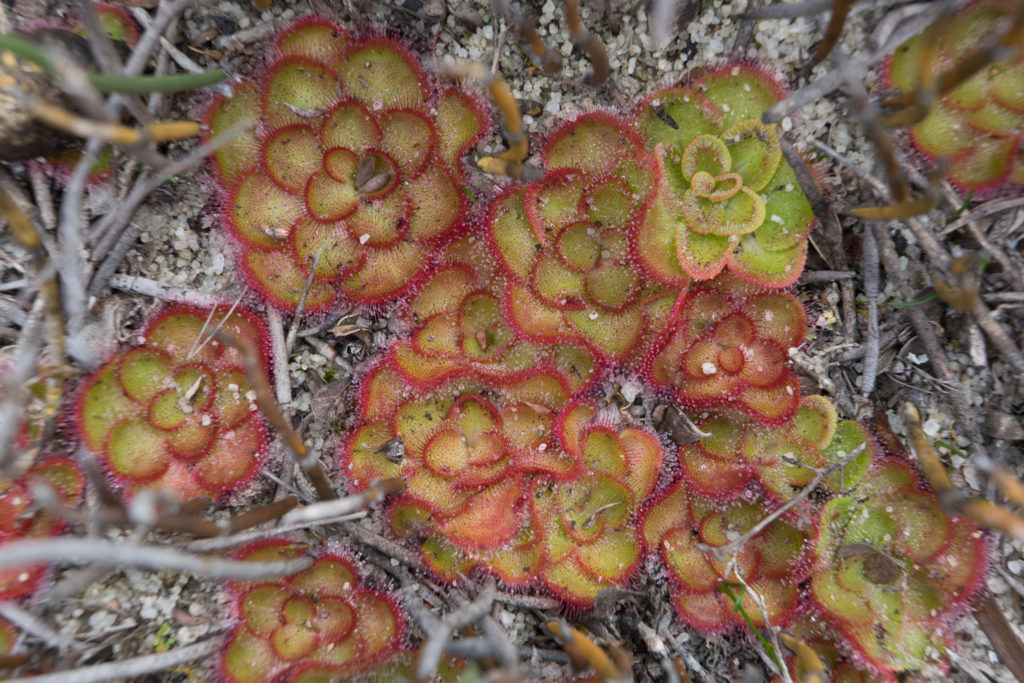
Drosera zonaria in mallee shrubland 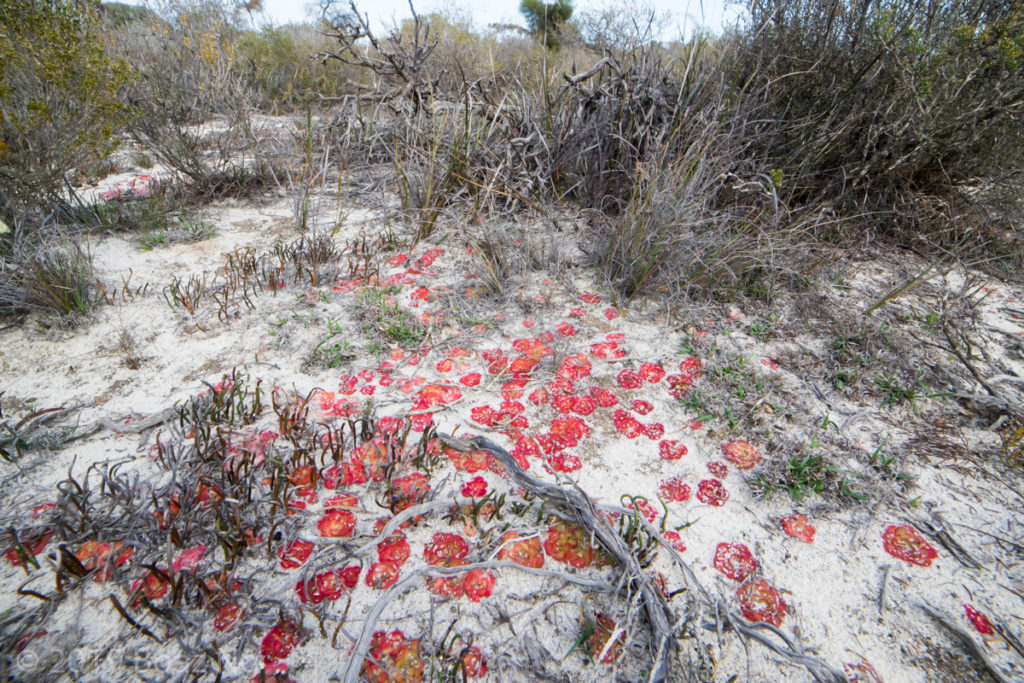
Drosera zonaria in mallee shrubland
Little did I know that this was going to be the least impressive thing of the day …

